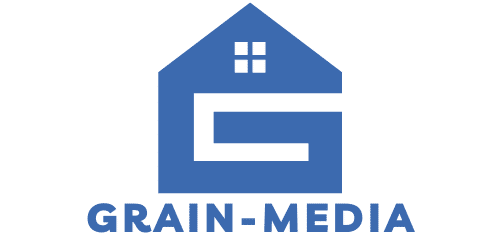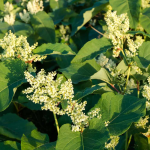In the realm of competitive sports, the margin between victory and defeat is often razor-thin. Every tiny advantage, whether it’s physical, technical or mental, can be the deciding factor. Today, we are going to delve into the world of biofeedback and neurofeedback, cutting-edge tools that are transforming the way athletes train and manage stress. Specifically, we will be exploring how these techniques can be utilized by competitive shooters, a sport where mental stability, focus and stress management can mean the difference between hitting or missing the target.
An Introduction to Biofeedback and Neurofeedback
Biofeedback is a process that enables an individual to learn how to change their physiological activity for the purpose of improving health and performance. Precise instruments measure physiological activity such as brainwaves (EEG), heart rate, breathing, muscle activity, and skin temperature. These instruments rapidly and accurately ‘feed back’ information to the user, allowing them to see real-time visuals of their physiological responses.
This might interest you : What Are the Best Isokinetic Exercises for Rehabilitation in Football Players?
Neurofeedback, a subset of biofeedback, specifically targets and trains the brain. It utilises EEG biofeedback to enhance an athlete’s mental performance by helping them to control and alter their brain wave patterns.
These techniques can be incredibly valuable for competitive shooters, as they can help athletes to control their stress levels, improve concentration, and enhance their overall performance.
Have you seen this : What’s the Impact of Microbiome Analysis on Nutrition for Cyclists?
The Connection between Stress and Performance in Sports
Stress is a prevalent issue in competitive sports. When you’re under pressure, your heart rate increases, your muscles tense, and your mind may race. These physiological responses can significantly impact your concentration and performance. In shooting sports, where precision and steadiness are key, high stress levels can be particularly detrimental.
Biofeedback and neurofeedback offer solutions to this challenge by helping athletes understand their stress responses and learn how to control them. Through real-time feedback on heart rate, skin temperature, and brain waves, athletes can identify when they are becoming stressed and use relaxation techniques to bring their physiological responses back into balance.
Biofeedback Training for Athletes: A Case Study
In a study led by Boris Blumenstein, a group of elite shooters were provided with biofeedback training to explore its impact on their performance. Participants were divided into two groups. One group received traditional shooting training, while the other was given biofeedback training alongside their regular regimen.
During the biofeedback sessions, the athletes were connected to sensors that measured parameters such as heart rate, skin conductance, and muscle tension. These parameters were displayed in real-time, allowing the athletes to see how their bodies reacted under different conditions. The goal was for the participants to learn to control these physiological responses and to stay calm under pressure.
The results were promising. The group that received biofeedback training showed significant improvement in their shooting performance compared to the control group. Furthermore, the biofeedback group reported lower stress and anxiety levels, indicating that the training not only enhances performance but also helps athletes manage stress effectively.
Neurofeedback for Mental Skills Training
Neurofeedback takes biofeedback a step further by focusing on the brainwaves that are directly responsible for various cognitive and emotional states. Competitive shooting is a mental sport, and the ability to stay focused, calm and alert under pressure is a critical skill.
In neurofeedback training, participants learn to control their mental states by watching their brainwave activity in real-time, displayed as a video game. When the brain is in the desired state, the participant is rewarded with positive feedback. Over time, the brain learns to enter these states more easily, improving the athlete’s mental performance.
The potential benefits of neurofeedback training for athletes are wide-ranging, from improved focus and decision-making skills to enhanced stress management and emotional control. By training the brain to enter optimal states at will, athletes can perform at their peak even under high-pressure situations.
Implementing Biofeedback and Neurofeedback in Training Regimes
Adopting biofeedback and neurofeedback into training regimes requires the collaboration of sport scientists, coaches, and athletes. It’s crucial to establish a baseline for each athlete’s physiological and mental responses, and then tailor the training to their individual needs.
During training sessions, athletes should be encouraged to use the real-time feedback to understand their responses and learn how to control them. Over time, they should be able to enter optimal states at will, enhancing both their performance and their ability to manage stress.
Incorporating biofeedback and neurofeedback into training doesn’t mean other training methods should be abandoned. These techniques should be used in conjunction with traditional training methods to create a comprehensive, well-rounded training approach.
In conclusion, biofeedback and neurofeedback are powerful tools that can help competitive shooters enhance their performance by gaining control over their physiological and mental responses. By understanding their stress responses and learning how to manipulate them, athletes can perform at their peak under pressure, edging ever closer to that winning shot.
The Role of Biofeedback in Heart Rate Variability and Stress Management
Heart rate variability (HRV), which is the variation in the time interval between heart beats, is an important indicator of how well an athlete is managing stress. A higher HRV usually indicates better stress management and resilience. Biofeedback training can help athletes increase their HRV, thereby enhancing their performance under pressure.
During a biofeedback session, athletes are connected to sensors that monitor their heart rate, skin conductance, and muscle tension. By visualizing these parameters in real-time, athletes can observe changing patterns in response to stress. For instance, if an athlete’s heart rate spikes during a stressful situation, they can use techniques such as deep breathing or progressive muscle relaxation to restore their heart rate to its baseline.
The ability to control the heart rate, and consequently improve HRV, can have a profound impact on an athlete’s performance. A study conducted by Boris Blumenstein, featured on Google Scholar and PubMed, reported that competitive shooters who received biofeedback training showed significant improvements in their shooting scores compared to the control group. They also reported lower stress levels, suggesting that biofeedback training can be an effective tool for stress management in competitive shooters.
Neurofeedback and EMG Biofeedback for Mental Training
Much like biofeedback, neurofeedback training and EMG biofeedback assist athletes in enhancing their mental strength and stress management skills. Neurofeedback focuses on training the brain to control its brainwave patterns, while EMG biofeedback focuses on muscle tension control.
Through neurofeedback, athletes learn to manipulate their brainwave activity for optimal performance. By achieving and maintaining ideal brainwave states, athletes can enhance their focus, decision-making skills, and emotional control – all crucial factors in the high-pressure environment of competitive shooting.
EMG biofeedback, on the other hand, helps athletes understand and control their muscle tension. In shooting sports, excessive muscle tension can lead to shaky hands, ultimately affecting the shooter’s accuracy. By using EMG biofeedback, athletes can learn to remain physically relaxed, even under pressure.
A study led by Bar Eli mentioned in Sport Psychology publications highlighted the effectiveness of neurofeedback and EMG biofeedback in improving performance and managing stress levels in athletes.
Conclusion
Competitive shooting, more than almost any other sport, requires a high level of mental training, stress management, and precision. Biofeedback and neurofeedback training can be truly transformative for these athletes, providing them with the tools they need to control their heart rate variability, brainwave patterns, and muscle tension.
The integration of these techniques into an athlete’s training regimen, using a collaborative approach involving sports scientists, coaches and the athletes themselves, can lead to significant improvements in performance and stress management. As athletes learn to understand their physiological responses to stress and how to control them, they can achieve peak performance, even under high-pressure situations.
The evidence found in studies by Blumenstein, Bar Eli and others on Google Scholar and PubMed, affirms the effectiveness of biofeedback and neurofeedback. These techniques enhance both the physical and mental aspects of performance, making them an invaluable part of any competitive shooter’s training regime.
In conclusion, biofeedback and neurofeedback can give competitive shooters the edge they need to hit their targets and manage the stress that comes with high-stakes competition, guiding them ever closer to their winning shot.
















